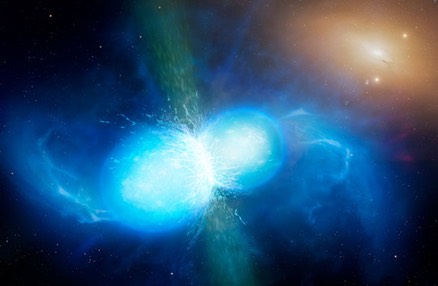The origin of heavy elements is one of the most exciting topics in modern astrophysics. The foundations were laid out in the Nobel prize work by Chandrasekhar and Fowler, and their colleagues. However, the most exciting puzzles about astrophysical sources of nuclei and their cosmic chemical evolution are still open. The detection of gravitational waves from compact binary mergers and their electromagnetic counterparts reaffirmed the importance of these events in chemical evolution of galaxies, as strong candidates for the production of the dominant fraction of the periodic table beyond iron.

The origin of the elements can observationally be best be studied through chemical tagging of low-mass stars. We use ground- and space-based astronomical facilities, such as Very Large Telescope Interferometer, Keck, and LBT, to obtain high-quality spectra of stars in the Milky Way.
A detailed analysis of their chemical composition places stringent constraints on the element production sites: explosive nucleosynthesis in core-collapse supernovae (SN), progenitors and explosion physics of SN Ia, s-process production in AGB stars and r-process, which is thought to occur in SN II and in compact binary mergers of neutron stars and black holes.
Here are some of our recent studies in this field:
Observational constraints on the origin of the elements. III. Evidence for the dominant role of sub-Chandrasekhar SN Ia in the chemical evolution of Mn and Fe in the Galaxy
Eitner, Bergemann, Hansen et al. A&A, 635, A38, 2020
This study was broadly covered in the media and appeared in MPIA highlights:
http://www.mpia.de/5068184/news_publication_14535346_transferred?c=2285
Chromium, Cobalt, and Nickel Abundances in Globular Clusters and Dwarf Galaxies
Kirby et al. incl. Kovalev, Bergemann; ApJS, 237, id. 18, 2018
Neutron-capture elements across the Galactic thin disk using Cepheids
da Silva et al. incl. Bergemann; A&A 586, A125, 2018
Ages and Heavy Element Abundances from Very Metal-poor Stars in the Sagittarius Dwarf Galaxy
Hansen et al. ApJ, 855, id. 83, 2018
Abundances of carbon-enhanced metal-poor stars as constraints on their formation
Hansen et al., A&A, 588, A37, 2016
The Gaia-ESO Survey: Sodium and aluminium abundances in giants and dwarfs. Implications for stellar and Galactic chemical evolution
Smiljanic et al. incl. Bergemann; A&A, 589, A115, 2016
LTE or non-LTE, that is the question. The NLTE chemical evolution of strontium in extremely metal-poor stars
Hansen, Bergemann et al. A&A, 551, A57, 2013